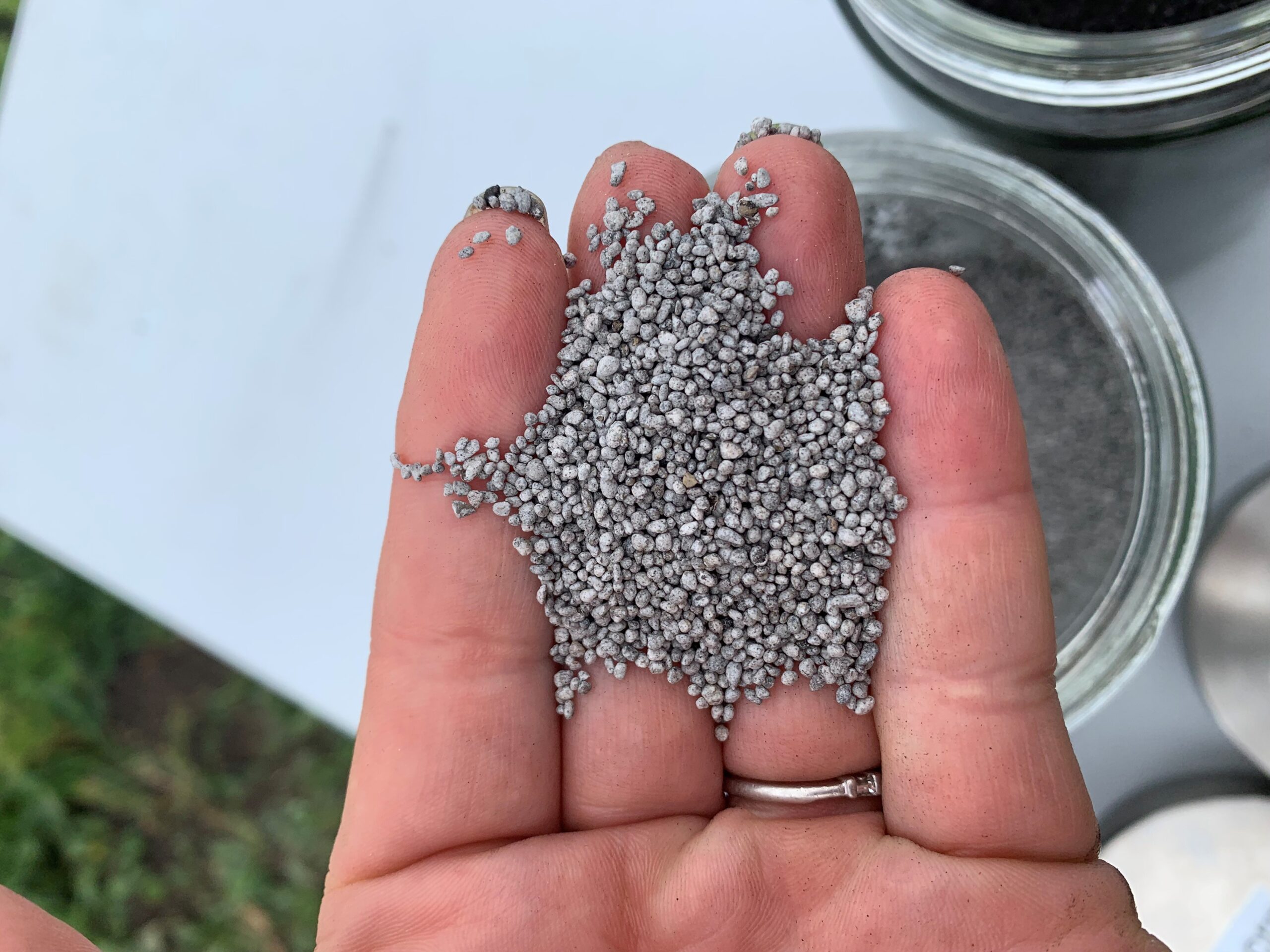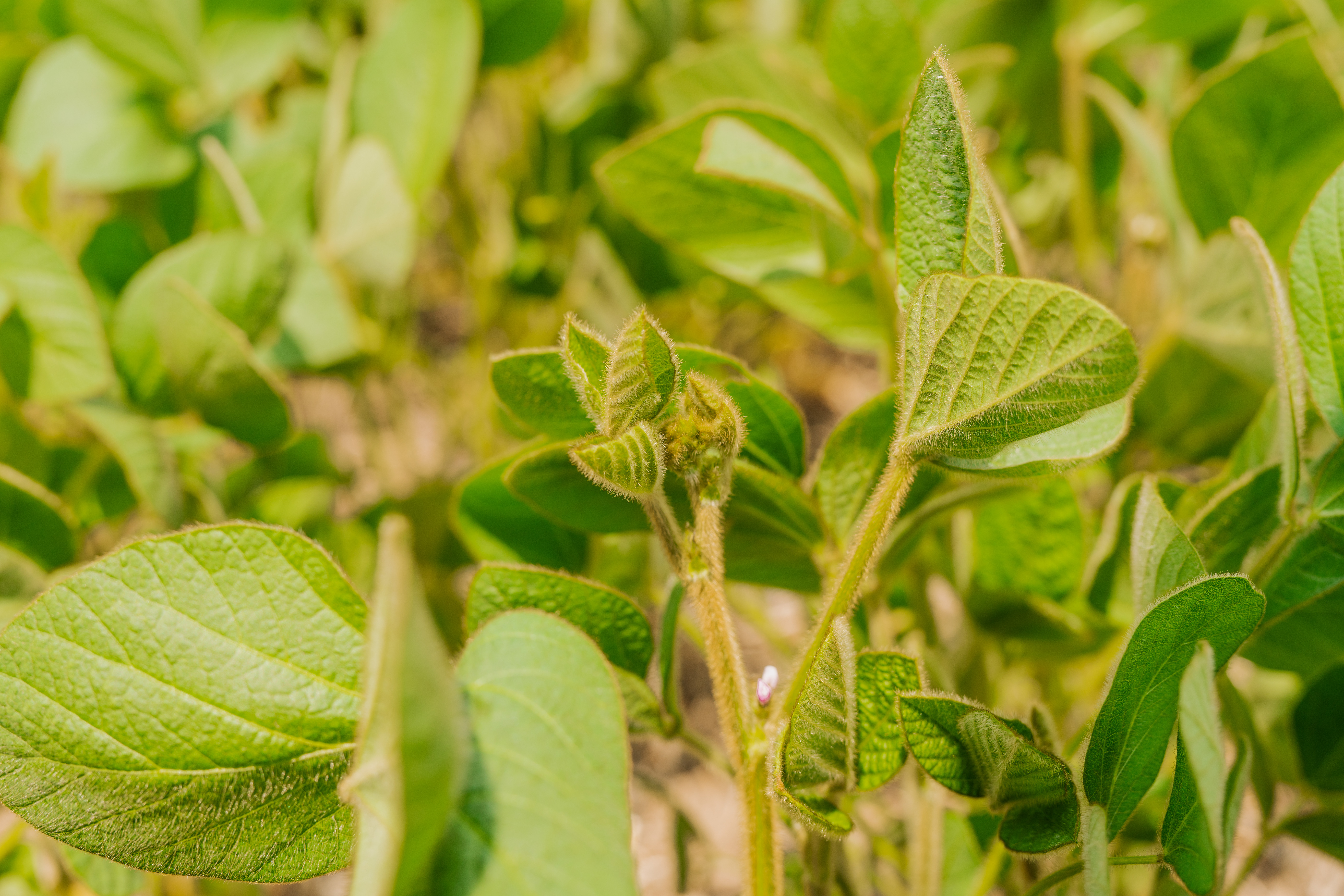By Bruce Barker, P.Ag.
Pulse crops take up and remove large amounts of nitrogen, phosphorus, and potassium with lesser amounts of sulphur (Table 1).
A well-inoculated pulse crop can fix the majority of its nitrogen requirements but for phosphorus, potassium, and Sulphur, the plant relies on nutrients in the soil or as added fertilizer. Pulse crops are sensitive to seed-placed fertilizer and tolerances by crop are outlined in Table 2. Placing too much fertilizer in the seed row can affect germination and emergence, which can reduce the plant stand to levels where yield will not be optimized.
Because pulse crops are sensitive to large amounts of seed-placed fertilizer, growers should consider other options such as side-banding or pre-seed banding where high rates are needed.
Phosphorus
Monoammonium phosphate fertilizer (11-52-0) has a low salt index and is the most common fertilizer phosphorus source applied on the Prairies. Safe rates are based on this granular fertilizer.
Table 1. Pulse Crop Nutrient Uptake and Removal Rates (lb/ac)
| Crop | Nitrogen | Phosphorus | Potassium | Sulphur | |
|---|---|---|---|---|---|
| Peas1 50 bu/ac | Uptake | 138 – 168 | 38 – 46 | 123 – 150 | 11 – 14 |
| Removal | 105 – 129 | 31 – 38 | 32 – 39 | 6 – 7 | |
| Lentils1 30 bu/ac | Uptake | 82 – 101 | 22 – 27 | 69 – 84 | 8 – 10 |
| Removal | 55 – 67 | 17 – 20 | 29 – 36 | 4 – 5 | |
| Faba Beans1 50 bu/ac | Uptake | 257 – 314 | 89 – 108 | 229 – 280 | 12 – 15 |
| Removal | 154 – 188 | 55 – 67 | 47 – 57 | 6 – 8 | |
| Chickpeas2 1,200 lb/ac | Uptake | 55 | 10 | 59 | – |
| Removal | – | – | – | – | |
| Soybeans3 35 bu/ac | Uptake | 160 – 200 | 28 – 35 | 84 – 155 | 12 |
| Removal | 130 – 140 | 28 – 30 | 48 – 50 | 4 | |
| Dry Beans4 1,600 lb/ac | Uptake | 75 | 22 | 63 | 5 |
| Removal | 565 | 18 | 30 | 4 |

Source: Bruce Barker
Sources:
1 Canadian Fertilizer Institute Western Canada
2 IPNI Nutrient uptake and removal, 2014
3 Manitoba Soil Fertility Guide
4 Canadian Fertilizer Institute Eastern Canada
Saskatchewan guidelines for safe rates of seed-placed fertilizer are based on research conducted in Saskatchewan. For pulse growers, following local guidelines is recommended. The recommended rates for phosphorus fertilizer are based on a one-inch opener spread, nine-inch row spacing, and good to excellent soil moisture conditions (10 to 15 per cent seedbed utilization).
To determine the rates of seed-placed fertilizer phosphorus for a fertilizer product such as 11-52-0, divide the actual rate of phosphorus by the percentage of phosphorus in the fertilizer (0.52) to get the pounds per acre rate of 11-52-0 fertilizer. For example, 15 pounds of actual phosphorusdivided by 0.52 equals 29 pounds of 11-52-0 fertilizer.
Safe rates of liquid phosphorus 10-34-0 have not been developed. Rates are highly dependent on the proximity of the liquid stream to the seed. Good separation between the liquid fertilizer and seed should be achieved.
A seed-applied inoculant based on a naturally occurring fungus (Penicillium bilaii) that grows on plant roots and makes residual soil phosphorus more available is registered on peas, lentils, soybeans, dry beans, and chickpeas. When used on soils testing low or medium in phosphorus, accompanying fertilizer phosphate rates should not be reduced. On high to very high phosphorus testing soils, a phosphorus solubilizing inoculant may be used in place of the starter phosphate fertilizer. However, these inoculants only allow the crop to access smaller amounts of phosphorus and should not be used to replace phosphorus fertilization programs.
Seedbed Utilization
A major factor in determining safe seed-placed fertilizer rates is seedbed utilization. Saskatchewan Ministry of Agriculture (SMA) defines seedbed utilization as the amount of the seedbed over which the fertilizer has been spread. Seedbed utilization reflects the relative concentration of the fertilizer.
Seedbed utilization is the width of spread of fertilizer and seed in the seedrow divided by the row spacing multiplied by 100. For example, six-inch row spacing with seed and fertilizer spread over two inches, the SBU would be 2 ÷ 6 x 100 = 33 per cent. A one-inch opener on nine inch row spacing would have 11 per cent seedbed utilization.
The higher seedbed utilization, the more fertilizer that can safely be applied with the seed. Wider spread and/or narrower row spacing allows greater fertilizer rates to be safely applied with the seed.
Table 2. Comparison of recommended safe rates of seed-placed phosphate fertilizer between Prairie provinces (actual P2O5 lb/ac)
| Crop | Saskatchewan1 | Manitoba2 | Alberta3 |
|---|---|---|---|
| Peas | 15 | 20 | 30 |
| Lentils | 20 | 20 | 15 |
| Faba Beans | 40 | 20 | 35 |
| Chickpeas | 20 | – | – |
| Soybeans | 20* | 10 | – |
| Pinto Beans | 30 | 20 | |
| Black Beans | – | 0 | – |
| Field Beans | – | 20 | 0 |

Source: Bruce Barker
1. Saskatchewan—Rates are based on knife openers with a one-inch spread, nine-inch row spacing and good to excellent soil conditions (10 to 15 per cent seedbed utilization).
Saskatchewan Ministry of Agriculture Guidelines for Safe rates of Fertilizer
2. Manitoba—Rates are based on disk or knife openers with a one-inch spread, six to seven inch row spacing, and good to excellent soil moisture (14 to 17 per cent seedbed utilization).
Manitoba Soil Fertility Guide
3. Alberta—Rates are based on good to excellent soil moisture.
Alberta Pulse Growers
*The safe rate for soybeans is based on limited data from one medium textured soil and approximately 15 per cent seedbed utilization. More work is underway to confirm this recommendation.
Recommendations can differ by province due to seedbed utilization used in the research and environmental conditions at the time of the studies. Some recommendations are based on other pulse crop responses. Projects are underway to refine the suggested safe rates and align provincial recommendations.
Soil Moisture and Soil Texture
Good to excellent soil moisture conditions help to reduce the impact of seed-placed fertilizer. Dr. Jeff Schoenau, soil scientist at the University of Saskatchewan, says that nearly all fertilizers are salts, and a main reason why they cause injury when placed at too high of a rate close to the seed is because of their osmotic or salt effect (they hold back water from the germinating seed and seedling). This effect will be amplified when the soil is sandy and dry, and applies to most phosphorus, potassium, and sulphur fertilizer sources, as well as nitrogen fertilizers. Heavier textured soil retains moisture better and clay will adsorb more of the fertilizer, which helps to reduce the impact. Growers should adjust
seed-placed fertilizer rates depending on soil moisture conditions and soil texture.
Potassium
If a field is deficient in potassium, applying large amounts of seed-placed potash is not recommended, as the fertilizer has a large salt index that can significantly reduce germination. Schoenau reports that peas are very sensitive to seed-placed potash fertilizer and any fertilizer should be banded away from the seed. For other pulse crops, if potash is seed-placed along with phosphate fertilizer, the total pounds of phosphorus plus pounds of potassium, should not exceed the maximum safe rates of seed-placed phosphorus that have been developed.
Sulphur
Ammonium sulphate fertilizer has a high salt effect. Safe seedrow fertilizer rates have not yet been developed for pulse crops. In canola, rates of seed-placed ammonium sulphate fertilizer of around 20 pounds sulphur per acre or higher have reduced the emergence of canola under some conditions.
Other Agronomic Considerations
SMA cautions that other factors can increase the risk of germination damage and reduce emergence. If these factors are present, pulse growers should consider reducing the safe seed-placed fertilizer application rates:
- Every effort should be made to ensure good seed-to-soil contact when seed-placing fertilizer.
- Wearing of openers can result in poor seed and fertilizer separation. Adjustments in the amount of fertilizer being added must be made as the openers wear.
- Field variability in rolling land can affect results. Eroded knolls often have soils that are low in organic matter, are drier, and higher in potential hydrogen. These areas may show greater seedling damage from seed-placed fertilizer.
- Seeding too deep, cloddy furrows, and crusting places more stress on seedlings and increases the likelihood of damage from seed-placed fertilizer.
- Cold soil temperatures, disease, poor quality seed, or high herbicide residue can delay emergence or weaken the seedling and thereby increase the probability of fertilizer damage to seedlings.



